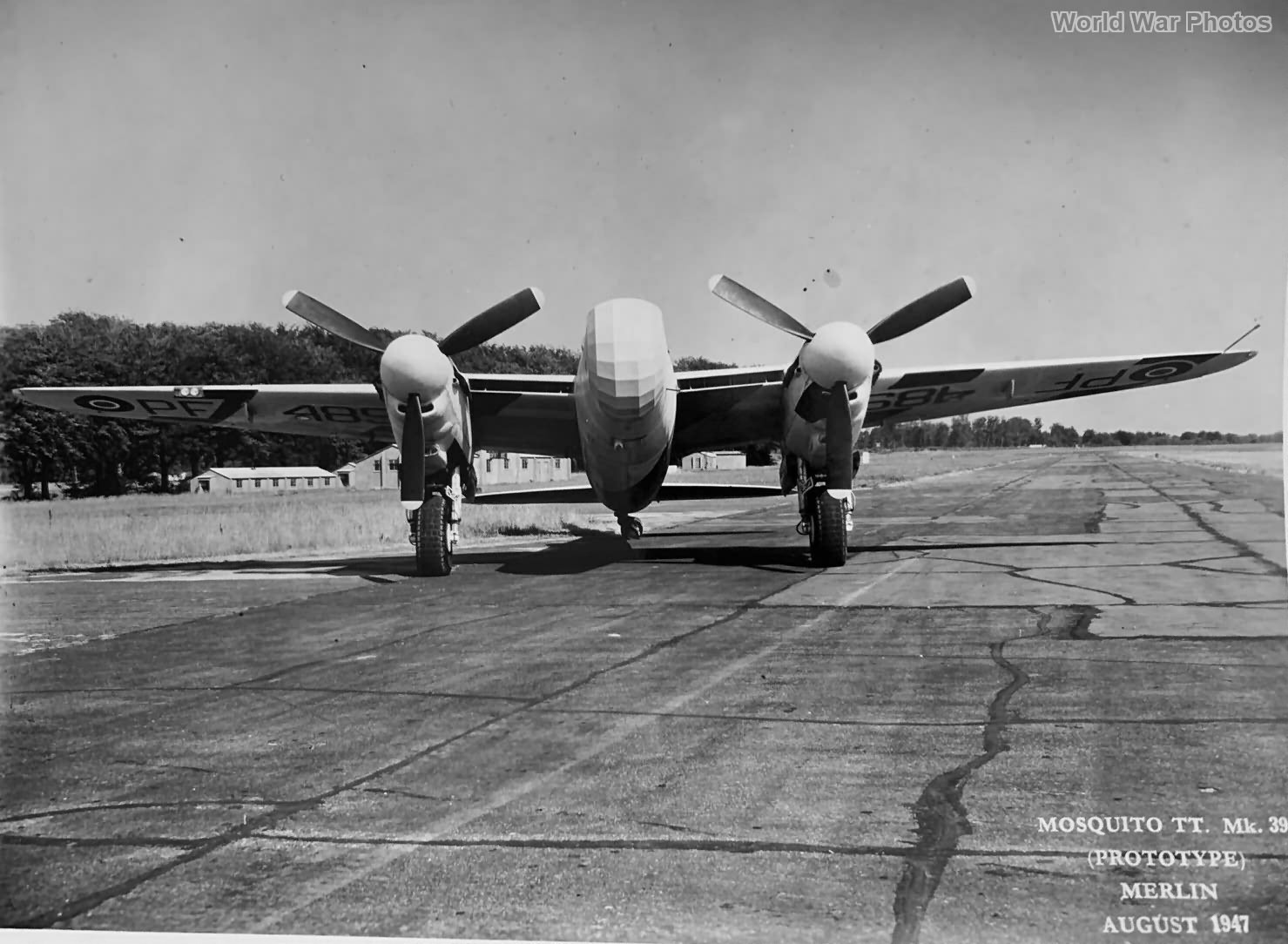The post-war Mosquito was primarily used as a target tug and had a distinctive paint scheme that helped distinguish it in its new role. This scheme combined aluminium on the upper surfaces with yellow and black stripes on the lower surfaces for high visibility during target practice missions.
Camouflage and Markings:
- Upper surfaces were painted in aluminium, with a hard demarcation line running parallel to the centerline of the fuselage. However, this demarcation line was set only two-thirds down the depth of the fuselage.
- The engine nacelles followed this demarcation pattern, but at the rear, the line curved upward, following the panel lines on the nacelle.
Under Surfaces:
- The undersides were painted yellow with black stripes. These black stripes were 3 feet wide, placed 6 feet apart across the yellow background.
- The stripes were not applied perfectly straight due to the aircraft’s complex curvature. In reality, the stripes were laid out using a box grid drawn on the ground, and then a plumb line was used to transfer the pattern onto the aircraft. This method caused some distortion of the lines, especially around curved sections of the fuselage and wings.
Demarcation:
- The demarcation line between the upper aluminium and lower striped surfaces wasn’t always a straightforward two-thirds of the fuselage depth. In some cases, two 60° lines were drawn from the ground upwards using the aircraft’s centerline as a reference. Where these lines intersected with the fuselage was where the demarcation occurred.
- However, for simplicity in modelling, it’s best to use photographs of the actual aircraft to gauge the exact placement of the demarcation lines.
This unique post-war scheme, with its highly visible black and yellow stripes, was designed to make the Mosquito target tugs easily identifiable during practice missions. However, its complex application can pose challenges for those attempting to recreate it in models.
